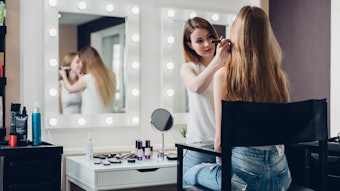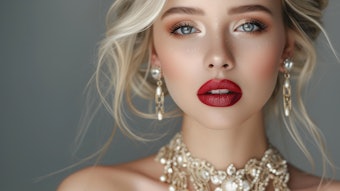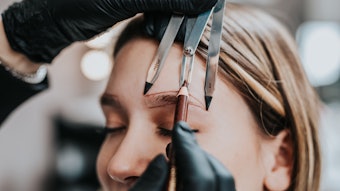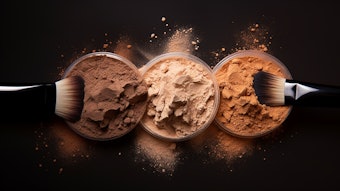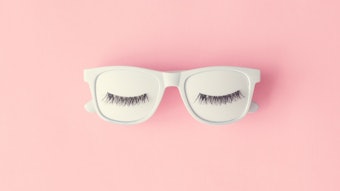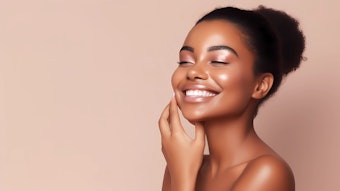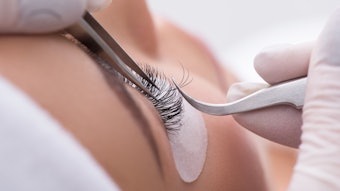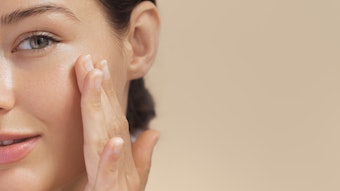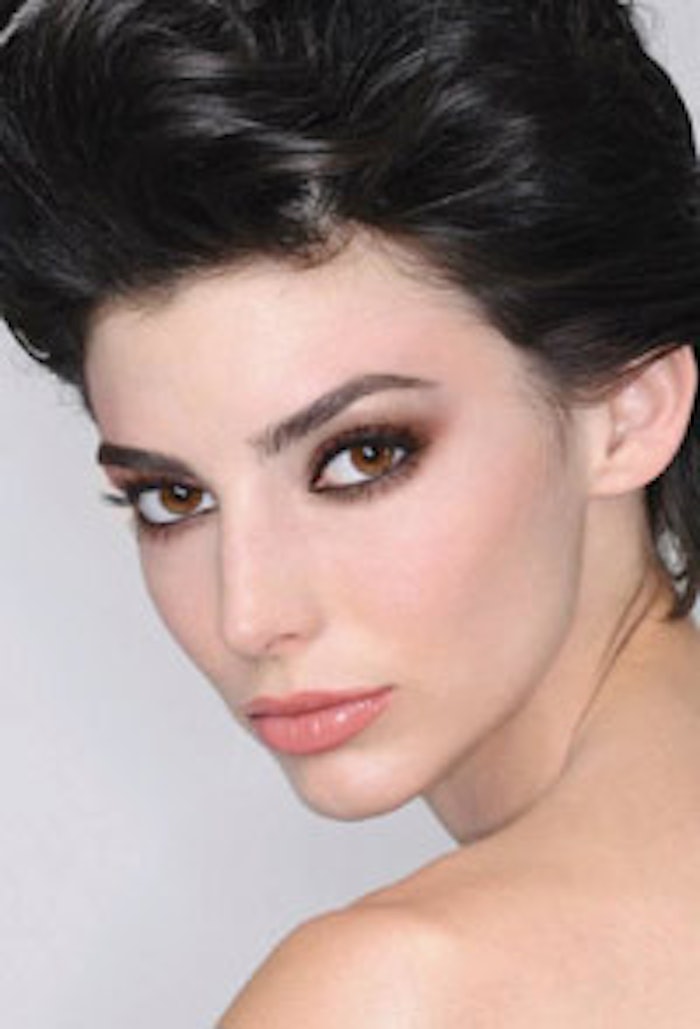
The general consensus among makeup experts is that this year’s Pantone fall palette is full of wearable, consumer-friendly colors. (See Fall 2013 Color Guide.) Take a pause before you assume the description “wearable” translates to “boring”—these shades evoke strong emotions and offer “... a strong nod to actual, real makeup,” says celebrity makeup artist and Emmy award-winner K.J. Bennett.
“Colors have a powerful way of impacting our mood. Isn’t that a big reason why we wear cosmetics?” says Elias Elgueta, makeup artist and national educator for jane iredale. Pantone’s palette covers a large range of rich, usable colors that clients of any age or skin tone can choose from, says celebrity makeup artist Taylor Chang-Babain.
Elgueta agrees that Pantone’s research this season is on point, as always. “The challenge—and certainly the fun part—is deciding how the Fashion Color Report relates and can be incorporated into color cosmetics,” says Elgueta. “Specifically, how clients at home are going to incorporate these colors into their makeup wardrobe.”
Off the runway
Makeup wardrobes for upcoming seasons are tracked just as fashion wardrobes are—straight off the runway. Bennett, who frequently attends top fashion shows, and recently led trend presentations at the 2013 International Make-Up Artist Trade Show in London and the 2013 Professional Hair and Makeup Expo in Pasedena, California, explains that there was a cool change of pace during this year’s shows. Stylists steered away from the usual structured look with a splash of color and, instead, fused trend colors together.
“Everything was very earthy and sort of organic,” says Bennett. “All of the colors had depths that were unexpected, including the way a purple had a brown edge to it … and a brown had mixed-in rusty and burgundy tones.”
Complexion. Skin was illuminated in a healthy way, and was not glossy or shimmery as it has been in the past, remarks Bennett, however the t-zone, including the nose, was matte or satin-finished. “It was very well-balanced. Sometimes when you see spring or summer looks, models have glowing skin all over … it reflects the heat of the warmer weather,” he explains. “This was very controlled—the tops of the cheeks and most planes on the face had a certain amount of illumination that gave them a glow, but it wasn’t a [stark or obvious] highlight.” Bennett suggests using a liquid illuminator and mixing it with a liquid foundation or moisturizer to achieve the look. Interestingly, Bennett saw a lack of distinct cheek color; however, he did note light bronzing and light contouring. “It was all about eyes and lips, not about cheeks,” he says.
Eyes. “The most important thing we saw was lining … the majority of runway shows had strong eyeliner, and I’m not talking smoky or smudgy. I’m talking about serious, sharp eyeliner … everywhere you looked, there was a cat eye or a hard line,” says Bennett.
The predominant eye colors were Pantone colors; however, they often came in the form of combinations. Carafe, a rich brown, was frequently mixed with Koi, a decorative orange, which translated into a copper, says Bennett. The coppery tone was also achieved by including Samba in the mix for a rusty take on the shade.
Although color fusion was prevalent, single-colored eye shadow, which is something that artists have not done a lot of during the past few seasons, made an appearance. “It’s kind of refreshing to see that some of the designers are going back [to using single colors on the eyelids] … as opposed to doing multiples,” says Bennett.
Lips. From rich crimsons and cabernets to berry, purple-infused reds, prominent, high-pigmented red lips were everywhere, although a multitude of textures took the stage. “Some were matte, and some were wet and shiny,” Bennettt says. As generally seen in the makeup world, when lips were bold, eyes were quite soft. However, when eyes were the prominent feature on the face, lips were nude.
Brows. Eye makeup determined the strength of the brows. “When you saw a stronger eye with more color—the orange or reddish browns, burgundy browns or purple browns—the brows were not that strong. When models had cat eyes and little eye shadow coloration and it was only about liner, the brows were stronger,” says Bennett. “I saw a lot of strong brows with strong lips.” It’s valuable to note that brows were groomed and filled in.
Putting on-trend colors to use
“The concept of introducing something new or a trend to clients is something that I am very passionate about,” says Elgueta. “Just as there are textures and weights in fashion, color cosmetics have their own trends each season. Playing with the opacity and textures of colors allow you to create even more fun, interesting and wearable looks.”
Alejandro Falcon, artistic director and East Coast corporate educator for Osmosis Skincare, explains that, “While fall usually means that makeup applications will have more intensity, you can still add splashes of color.”
Although it is possible for most clients to wear the majority of the trending shades, the question you should ask is: Which colors will look natural or bold on each skin tone, and what is the look your client is going for, explains Chang-Babain. “Contrasts will cause the color to look starker … if [your client] wants to make a statement, this is the way to go.”
Acai., Makeup artist Donna Mee of Donna Mee, Inc. explains that Acai can offer a “... fresh, updated look when it is used as eyeliner, whether it is applied with a pencil or powder shadow … specifically with a yellow-green or dark brown eye.” Esthetician and makeup artist, Pauline Farace, agrees that Acai works well as an eyeliner, but can also be incorporated into a smoky eye for a pop of color. Alternatively, Elgueta suggests using Acai’s beauty berry undertone on lips.
Carafe. The rich brown shade of Carafe can be used as a substitute to black and is a suitable replacement for a daytime eyeliner, says Mee. “It’s also a great go-to color on most brown or blue eyes, but would make a green or hazel eye look less green.”
Deep Lichen Green. Pantone describes Deep Lichen Green as a natural, lush shade. “It’s a great contour shade for hazel or grayish-green eye colors. The muted green is great for adding a touch of color to a neutral, smoky eye,” says Mee. “It’s really pretty on blondes or redheads.”
Emerald. “Most women look great in some shade of green applied as an eye shadow or eyeliner. The coolness of Emerald green is beautiful against more pale, cool complexions,” says Elgueta. Farace suggests applying a splash of the Emerald as an eyeliner to make the eye pop.
Koi. A decorative orange, Koi is “... an excellent color choice for clients who have cooler skin tones, as well as blondes, redheads or strawberry blondes,” says Mee. Although Koi can be a bit too intense when worn as eye shadow alone, Mee suggests sheering it down or pairing it with a golden-brown contour eye shadow. “It looks best if you put just a hint of the Koi faded to the outer edge of the darker neutral shade … it’s really pretty on a blue eye,” she adds. Farace recalls that an orange lip was a huge trend during the summer season, but it’s being carried into fall. She recommends sheering Koi down with a gloss if the highly pigmented color is too bold for a client.
Linden Green. Linden Green offers a change from the deep shades trending for fall, and is described by Pantone as bringing a lightness and brightness to the palette. “It’s a subtle color—great as an eye shadow on a green or muted blue-green eye. It works nice when it’s applied in a sheer shade, specifically in a shimmer on the center of the lower lid,” says Mee. Elgueta adds that, because the shade has a yellow influence, it is best suited on medium-to-dark complexions.
Mykonos Blue. Mykonos Blue is a bold, but classic shade. Blue can often be a challenging color to wear, but Mee says, “Mykonos Blue is flattering on the right shade of a blue eye if it has a darker outer iris, but it can also be done on a brown eye.” She suggests that, like Emerald, this shade can be worn as an eyeliner for those seeking to make a fashion statement.
Samba. “Samba as a lip color is killer—extremely versatile for all skin tones. Women should feel an immediate boost of confidence when wearing a lovely red lip,” says Elgueta. Although clients can be hesitant to wear red blush, Mee recommends using Samba sparingly on those with olive-yellow or golden complexions.
Turbulence. A dark gray, Turbulence can be used as an alternative to black. “Try to use the shade as a contour shadow or over the low lid if you’re doing a smoky eye … Turbulence is especially striking on a muted-blue or blue-gray eye color,” says Mee. “For those with large eyelids or a high crease, the color can still be too overwhelming. In that case, they should utilize it as an eyeliner or smudge it into the eye shadow on the lash line.”
Vivacious. A deep fuchsia, Vivacious will enhance warm complexions, and is especially fabulous on an olive skin tone, says Mee. “For a woman who is more daring and likes a dramatic eye, use just a little halo of the Vivacious color at the outer edges of dark smoky eye. The combination looks great on a dark brown or hazel eye,” she says, adding that anyone could wear it as a sheer tone in a lip gloss.
“The easiest way to incorporate a new or unfamiliar color into an eye makeup is to either use it as an eyeliner or to put it on the lid only and fade it into the crease, and do nothing else,” say Bennett. “Using these rich colors—these brown-based purples and burgundies and oranges—if you do the color on the lid only, and blur the lines up to the crease, apply your liner and mascara—and it’s a really nice, fresh way to do it.”
Trends: A retail and marketing opportunity
Trends are often quickly fleeting season-to-season, even though they have the opportunity to become classic, or at least stick around for a few more months. For example, Emerald was an identified trend color last spring, has carried over through summer and is sticking around for autumn. However, since most trends do change after several months, you have the opportunity to freshen up your retail and marketing tactics each time they do. Although clients will not always be interested in the newest trends, most women do want to make additions that will keep their look current and fresh, says Elgueta.
Farace holds events and promotions during the spring and fall to expose her clients to the newest styles. Her presentations are usually brief, and she spends the time updating her clients on current and upcoming trends. To market events and promotions, Farace sends out e-mails, posts on social media and creates a small display in her skin care facility to create interest. Trends off the runway can be difficult to incorporate into everyday life, but Farace recommends beginning by focusing on what the client is comfortable with, and how much they would like to add into their makeup wardrobe during the upcoming season.
Farace uses visuals and images as marketing tools, showing her clients looks she has created and demonstrating how trends can be incorporated into their everyday looks. She also recommends that professionals wear the on-trend looks so clients can see how they can be customized to the individual. Chang-Babain emphasizes that, although trends are valuable, it’s important that your clients feel their best, noting that talented makeup application can empower clients to feel confident no matter the affair.

